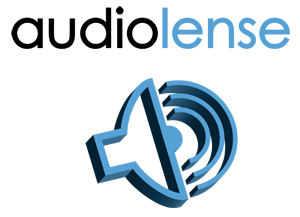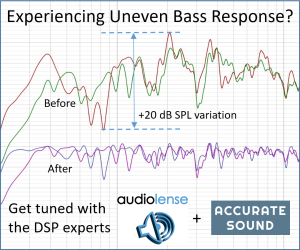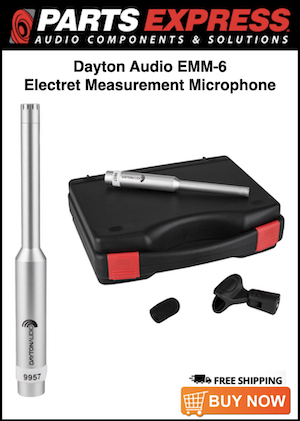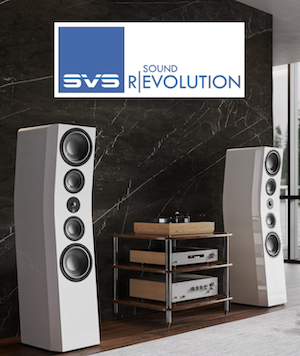I am about to build a new DAC, but I am undecided whether to use Delta Sigma technology or R2R - NOS. I've heard conflicting opinions and can't decide which option to choose. I have listened to an R2R DAC and the reproduced sound seems much more natural to me than an anonymous Delta Sigma. Is it just my impression or is there really a better sound using a DAC with this old technology? Thanks to whoever will help me in choosing.
-
AUDIO VIDEO PROCESSING, SETUP & ENVIRONMENTOfficial REW (Room EQ Wizard) Support Forum Audiolense User Forum Calibration Equipment Auto-EQ Platforms / Immersive Audio Codecs Video Display Technologies / Calibration AV System Setup and Support Listening Room / Home Theater Build Projects Room Acoustics and Treatments AV Showcase Movies / Music / TV / Streaming
-
AUDIO VIDEO DISCUSSION / EQUIPMENTHome Theater / Audio and Video - Misc Topics Essence For Hi Res Audio AV Equipment Advice and Pricing Awesome Deals and Budget AV Equipment AV Receivers / Processors / Amps UHD / Blu-ray / CD Players / Streaming Devices Two Channel Hi-Fi Equipment DIY Audio Projects Computer Systems - HTPC / Gaming HD and UHD Flat Screen Displays Projectors and Projection Screens AV Accessories Buy - Sell - Trade
Navigation
Install the app
How to install the app on iOS
Follow along with the video below to see how to install our site as a web app on your home screen.
Note: This feature may not be available in some browsers.
More options
You are using an out of date browser. It may not display this or other websites correctly.
You should upgrade or use an alternative browser.
You should upgrade or use an alternative browser.
DAC Delta Sigma or R2R/NOS?
- Thread starter ecelo
- Start date
MediumRare
Member
- Joined
- Nov 8, 2019
- Posts
- 76
If you’re building one it will be for fun; all competently built DACs sound identical. Instrument grade DACs are available for $150. R2R is very hard to build competently but would be more fun. Like a wooden boat instead of a fiberglass one. Get all the facts here: audio science review.com
Papioaf
Registered
- Joined
- Apr 30, 2022
- Posts
- 2
More
- Preamp, Processor or Receiver
- Yamaha 5760
- Main Amp
- Yamaha 5760
- Additional Amp
- Yamaha CA-1000
- DAC
- Mojo Audio Mystique v3
- Computer Audio
- Mac mini (Late 2012) w/ DC power conversion
- Universal / Blu-ray / CD Player
- Samsung UBD-M8500
- Front Speakers
- New Advent Loudspeakers (Stacked)
- Center Channel Speaker
- Polk Audio
- Surround Back Speakers
- Bose Acccoustimas Series III
- Subwoofers
- Klipsch R-10SW
- Video Display Device
- Sony XBR-65X930E
- Remote Control
- Logitech Harmony
There’s a really good explanation of the history and background of the two concepts (DSD vs. PCM: Myth vs. Truth) posted on the Mojo Audio website. I’m unable to post the link (for good reasons), but believe it would be worth your effort to find and read it.
highstream
Member
- Joined
- Dec 29, 2018
- Posts
- 53
One place that you might get some get some thoughtful opinions is from Lampizator and other brand users on What’s Best Forums. Although I’m not sure that they still are building both, Lampi has done so in recent years and customers could order one or the other per their sound preferences (no all dacs sound the same discussion there). Mine is a delta sigma version and I really like it, but have never compared the two (I don’t think the Direcstream dac I had was R2R and don’t know what the PrimaLuna is).
Thank you all for your information. The idea I got is that the sound produced by one system rather than another is very subjective and therefore independent of the technology used. I will probably opt for the "old" solution which as MediumRare said it might be more fun to have a boat built in wood rather than fiberglass. To respond to highstream, the PrimaLuna is a tube amplifier.
highstream
Member
- Joined
- Dec 29, 2018
- Posts
- 53
Thank you all for your information. The idea I got is that the sound produced by one system rather than another is very subjective and therefore independent of the technology used. I will probably opt for the "old" solution which as MediumRare said it might be more fun to have a boat built in wood rather than fiberglass. To respond to highstream, the PrimaLuna is a tube amplifier.
I misremembered: the PL was a preamp. As for sound being independent of technology, most developers would not agree, which is why they tend to subjectively and technically favor one type of design over another and experiment a lot, playing with hybrids as well.
ddude003
Senior AV Addict
More
- Preamp, Processor or Receiver
- PrimaLuna Dialogue Premium TubePre (2 channel+sub)
- Main Amp
- McIntosh MC152 SS Amp (2 channel)
- Additional Amp
- Yamaha RX-A850 Pro (the other 5 channels lol)
- DAC
- Chord Electronics Ltd. Qutest
- Computer Audio
- MacBook Pro, Custom i7 7700k De-lid 2xAsus1080ti GFX, Audirvana Studio, Hang Loose Convolver+FIR, Tone Projects Michelangelo, Pulsar Massive & 8200, LiquidSonics, SoX with Million Tap mod
- Universal / Blu-ray / CD Player
- Sony UBP-X700 /M Ultra HD 4K HDR & PS5
- Streaming Equipment
- Netgear Nighthawk S8000 Streaming Switch
Lumin U1 Mini Streamer Transport
- Streaming Subscriptions
- QoBuz Studio Premier, Amazon Prime & Netflix
- Front Speakers
- Martin Logan ElectroMotion ESL
- Center Channel Speaker
- Martin Logan Motion C2
- Surround Speakers
- Martin Logan Motion 4
- Surround Back Speakers
- Martin Logan Motion 4 (yes, another set of these)
- Subwoofers
- SVS SB-1000 Pro
- Screen
- Elite Screens Aeon CLR3 0.8 Gain 103-inch
- Video Display Device
- Samsung The Premiere LSP7T UST Laser Projector
- Remote Control
- PrimaLuna, Lumin iApp, Samsung & Yamaha
- Other Equipment
- Cifte 12AU7 NOS & Genalex Gold Lion Tubes in Pre
ThrowRug, SaddleBlankets, WideBand & Bass Traps...
PrimaLuna is a brand that includes a tubed preamp, tubed power amps, tubed integrated (read pre and power) as well as a tubed DAC... The PrimaLuna DAC uses a Burr Brown, now owned by Texas Instruments, PCM1792A & SRC4192 DAC and upsampling... The DirectStream by PS Audio converts every input signal, both PCM and DSD, to single-bit, high sample rate 20X DSD signal. Use of a FPGA rather than an off the shelf DAC chip... One might also look at the Chord DACs which are also FPGA based with an interesting Delta Sigma architecture twist and pulse array analogue output stage...
Last edited:
highstream
Member
- Joined
- Dec 29, 2018
- Posts
- 53
This thread link might be of interest for background research, that is, for looking up some of the big gun dacs to see what they use. The Select is a good place to start. https://www.whatsbestforum.com/threads/best-dacs-comparison-test-result-my-subjective-opinion.25584/ Btw, this thread exposed me to a lot of names I was unaware of and ultimately got me to look more closely at Lampizator, I found a used unofficial Golden Atlantic to replace my Directstream, which I liked but felt had a digital sound that fell short of what I was looking for.
DonH57
Member
- Joined
- Jun 17, 2017
- Posts
- 50
More
- Preamp, Processor or Receiver
- JBL Synthesis SDP-75 (Trinnov Altitude 32)
- Main Amp
- Emotiva XPA-2
- Additional Amp
- Emotiva XPA-5
- Other Amp
- Buckeye NC252MP (4-ch)
- Universal / Blu-ray / CD Player
- Oppo UDP-203
- Streaming Equipment
- SONOS
- Front Speakers
- Revel Salon2
- Center Channel Speaker
- Revel Voice2
- Surround Speakers
- Revel Salon 2
- Surround Back Speakers
- Revel Salon 2
- Front Height Speakers
- Revel M80XC
- Rear Height Speakers
- Revel M80XC
- Subwoofers
- Rythmik F12 (x4)
- Screen
- 65" LG
- Remote Control
- Harmony One
I am not sure what you mean by "build". I have "built" DACs in the sense that I designed DAC ICs (mostly, not many discrete designs) at the transistor level (albeit mostly well above audio frequencies). I am guessing you mean to buy the interface and DAC chips, and perhaps design and build your own output filter and buffer? Will you design your own PCB's and such?
Performance will generally be much, much higher for delta-sigma designs. The early issue have been solved for many years so if you want the absolute best performance something like an ESS DAC is likely your best bet. R2R (which are usually segmented, not purely R-2R designs) DACs are getting hard to find these days and will have higher distortion and noise though probably inaudible for the most part. Still, they have the "nostalgia factor", and if you find you prefer them by all means go for it. Soekris (IIRC) has some interesting designs available as boards.
Be aware that the output filter and buffer (often an I-V converter incorporating the anti-imaging filter followed by an output driver) are critical and probably contribute the most to the "sound" of a DAC.
If you need more basic info about the technical differences, I have a series of introductory articles on ASR (Audio Science Review) that describe conventional and delta-sigma DACs, as well as introductory articles on sampling and such (that I assume you are past if you going to design your own DAC).
FWIWFM - Don
Performance will generally be much, much higher for delta-sigma designs. The early issue have been solved for many years so if you want the absolute best performance something like an ESS DAC is likely your best bet. R2R (which are usually segmented, not purely R-2R designs) DACs are getting hard to find these days and will have higher distortion and noise though probably inaudible for the most part. Still, they have the "nostalgia factor", and if you find you prefer them by all means go for it. Soekris (IIRC) has some interesting designs available as boards.
Be aware that the output filter and buffer (often an I-V converter incorporating the anti-imaging filter followed by an output driver) are critical and probably contribute the most to the "sound" of a DAC.
If you need more basic info about the technical differences, I have a series of introductory articles on ASR (Audio Science Review) that describe conventional and delta-sigma DACs, as well as introductory articles on sampling and such (that I assume you are past if you going to design your own DAC).
FWIWFM - Don
highstream
Member
- Joined
- Dec 29, 2018
- Posts
- 53
If you look at the list of dacs I linked, R2R or hybrids are among the top in that listener's comparisons, including the $90K plus one.
DonH57
Member
- Joined
- Jun 17, 2017
- Posts
- 50
More
- Preamp, Processor or Receiver
- JBL Synthesis SDP-75 (Trinnov Altitude 32)
- Main Amp
- Emotiva XPA-2
- Additional Amp
- Emotiva XPA-5
- Other Amp
- Buckeye NC252MP (4-ch)
- Universal / Blu-ray / CD Player
- Oppo UDP-203
- Streaming Equipment
- SONOS
- Front Speakers
- Revel Salon2
- Center Channel Speaker
- Revel Voice2
- Surround Speakers
- Revel Salon 2
- Surround Back Speakers
- Revel Salon 2
- Front Height Speakers
- Revel M80XC
- Rear Height Speakers
- Revel M80XC
- Subwoofers
- Rythmik F12 (x4)
- Screen
- 65" LG
- Remote Control
- Harmony One
If you look at the list of dacs I linked, R2R or hybrids are among the top in that listener's comparisons, including the $90K plus one.
Sorry, I meant to quote the OP, was not responding to your post. I usually have little interest in other listener's comparisons; too often too biased and all that jazz. And I am certainly in no position to afford a $90k DAC. As I said if he -- or you -- feel R2R sounds best then by all means go that way. It could well be the extra noise and distortion adds some sense of "realism" that listeners prefer, though most of the time it seems to be preconceived bias against whatever is newest. This gets into the usual "I don't care how it measures or what you know about engineering, it is how it sounds to me" argument. I was in the "every atom in the cable matters" camp many years ago until a little more knowledge, and a number of DBT/ABX studies, showed me I was imagining waaay more than I would ever have believed. OTOH there has been some research showing a little bit of distortion is preferred by some listeners, such as Pass' work on 2HD. Me, I loved my old tube amp, but never considered it more accurate to the source, just sounded nice.
R2R for me every time ..until I hear a delta or otherwise that sounds better than my DAC. Of course it isn't only dependant on the technology used but it's implementation. However, I would definitely disagree with the statement that all competently built DACs sound the same - seems a crazy thing to say to me ...but some people will only accept theoretical science and not believe their ears.
I await the backlash
I await the backlash
DonH57
Member
- Joined
- Jun 17, 2017
- Posts
- 50
More
- Preamp, Processor or Receiver
- JBL Synthesis SDP-75 (Trinnov Altitude 32)
- Main Amp
- Emotiva XPA-2
- Additional Amp
- Emotiva XPA-5
- Other Amp
- Buckeye NC252MP (4-ch)
- Universal / Blu-ray / CD Player
- Oppo UDP-203
- Streaming Equipment
- SONOS
- Front Speakers
- Revel Salon2
- Center Channel Speaker
- Revel Voice2
- Surround Speakers
- Revel Salon 2
- Surround Back Speakers
- Revel Salon 2
- Front Height Speakers
- Revel M80XC
- Rear Height Speakers
- Revel M80XC
- Subwoofers
- Rythmik F12 (x4)
- Screen
- 65" LG
- Remote Control
- Harmony One
R2R for me every time ..until I hear a delta or otherwise that sounds better than my DAC. Of course it isn't only dependant on the technology used but it's implementation. However, I would definitely disagree with the statement that all competently built DACs sound the same - seems a crazy thing to say to me ...but some people will only accept theoretical science and not believe their ears.
I await the backlash
I did not say that. However, I do not trust my ears without reservation, either. And I am an engineer, so my science is applied, not just theoretical. Differences are readily measured, less readily heard, but certainly possible. IMO/IME.
Hey DonH57, I was a bit provocative, but my comment was in response to the above, not your postIf you’re building one it will be for fun; all competently built DACs sound identical. Instrument grade DACs are available for $150. R2R is very hard to build competently but would be more fun. Like a wooden boat instead of a fiberglass one. Get all the facts here: audio science review.com
ddude003
Senior AV Addict
More
- Preamp, Processor or Receiver
- PrimaLuna Dialogue Premium TubePre (2 channel+sub)
- Main Amp
- McIntosh MC152 SS Amp (2 channel)
- Additional Amp
- Yamaha RX-A850 Pro (the other 5 channels lol)
- DAC
- Chord Electronics Ltd. Qutest
- Computer Audio
- MacBook Pro, Custom i7 7700k De-lid 2xAsus1080ti GFX, Audirvana Studio, Hang Loose Convolver+FIR, Tone Projects Michelangelo, Pulsar Massive & 8200, LiquidSonics, SoX with Million Tap mod
- Universal / Blu-ray / CD Player
- Sony UBP-X700 /M Ultra HD 4K HDR & PS5
- Streaming Equipment
- Netgear Nighthawk S8000 Streaming Switch
Lumin U1 Mini Streamer Transport
- Streaming Subscriptions
- QoBuz Studio Premier, Amazon Prime & Netflix
- Front Speakers
- Martin Logan ElectroMotion ESL
- Center Channel Speaker
- Martin Logan Motion C2
- Surround Speakers
- Martin Logan Motion 4
- Surround Back Speakers
- Martin Logan Motion 4 (yes, another set of these)
- Subwoofers
- SVS SB-1000 Pro
- Screen
- Elite Screens Aeon CLR3 0.8 Gain 103-inch
- Video Display Device
- Samsung The Premiere LSP7T UST Laser Projector
- Remote Control
- PrimaLuna, Lumin iApp, Samsung & Yamaha
- Other Equipment
- Cifte 12AU7 NOS & Genalex Gold Lion Tubes in Pre
ThrowRug, SaddleBlankets, WideBand & Bass Traps...
You can do some interesting things with your source music files with utilities like SoX, Roon, HQplayer, Audirvana, PGGB, iZotope, etc... Bypassing internal upscaling and filtering with possibly better algorithms and adding EQ for room correction...
Last edited:
Popular tags
20th century fox
4k blu-ray
4k uhd
4k ultrahd
action
adventure
animated
animation
bass
blu-ray
calibration
comedy
comics
denon
dirac
dirac live
disney
dolby atmos
drama
fantasy
hdmi 2.1
home theater
horror
kaleidescape
klipsch
lionsgate
marantz
movies
onkyo
paramount
pioneer
rew
romance
sci-fi
scream factory
shout factory
sony
stormaudio
subwoofer
svs
terror
thriller
uhd
ultrahd
ultrahd 4k
universal
value electronics
warner
warner brothers
well go usa
















